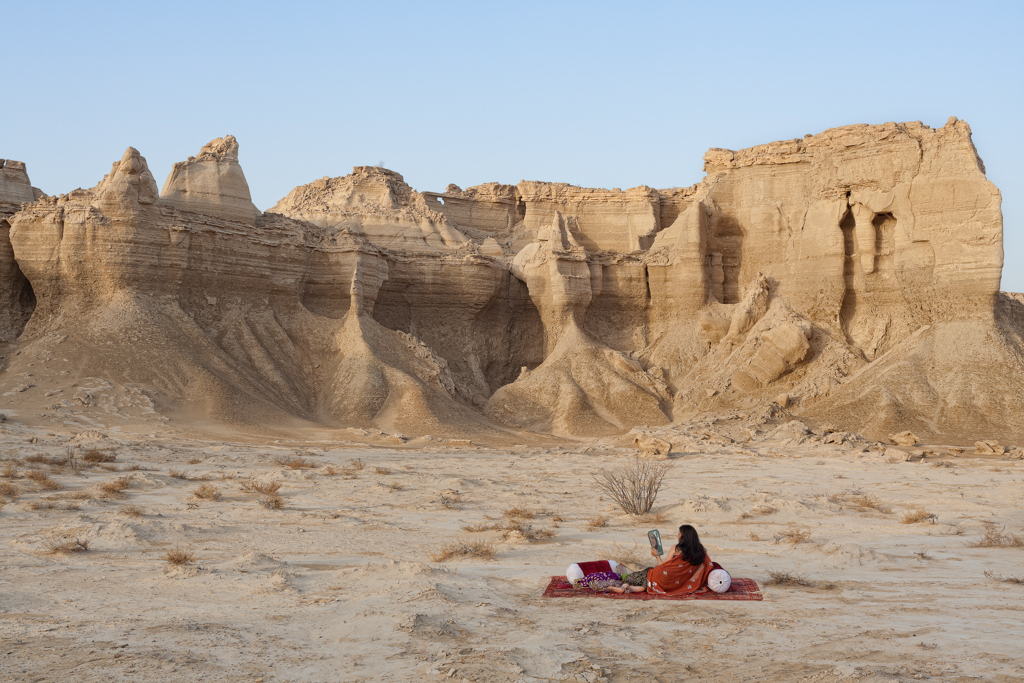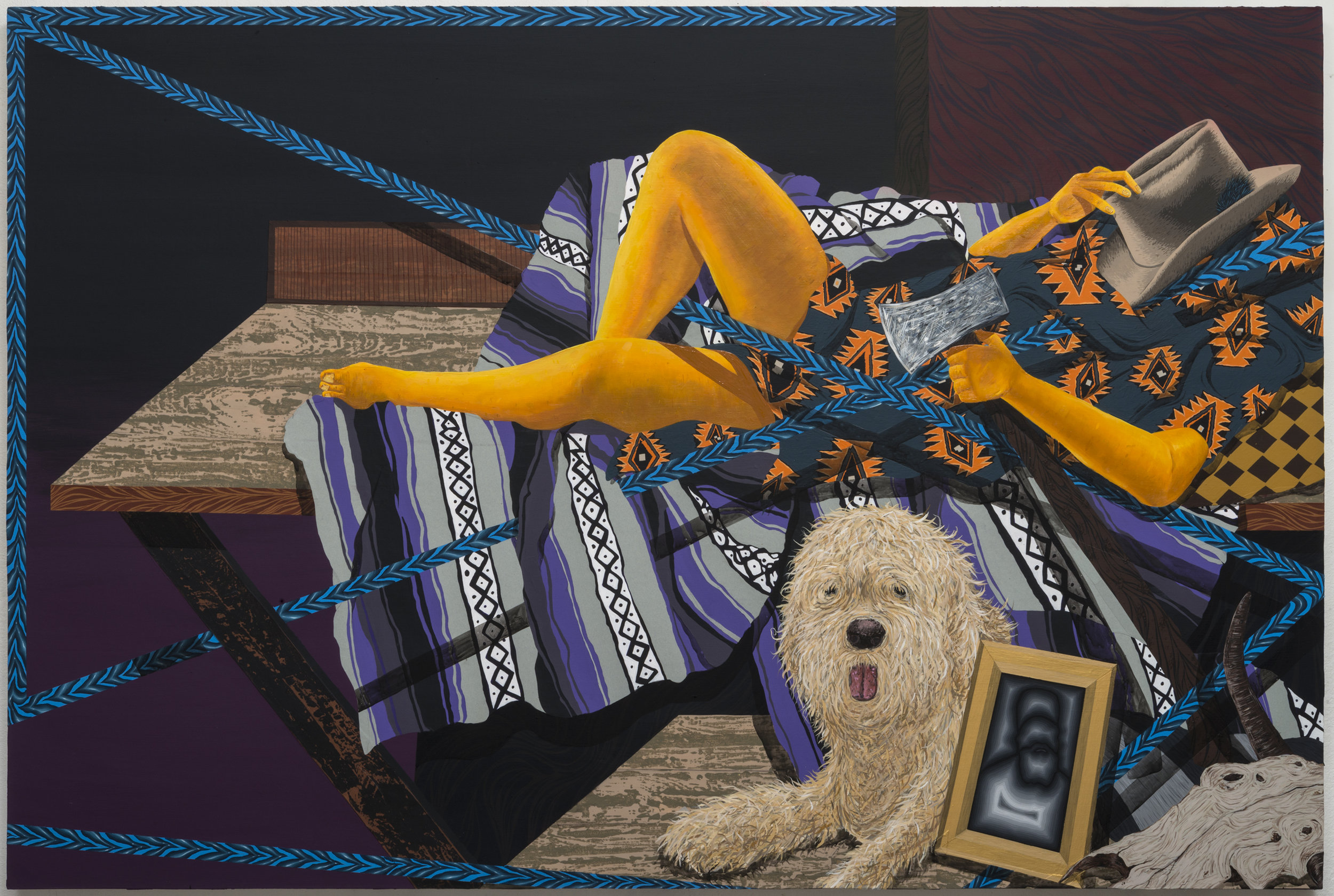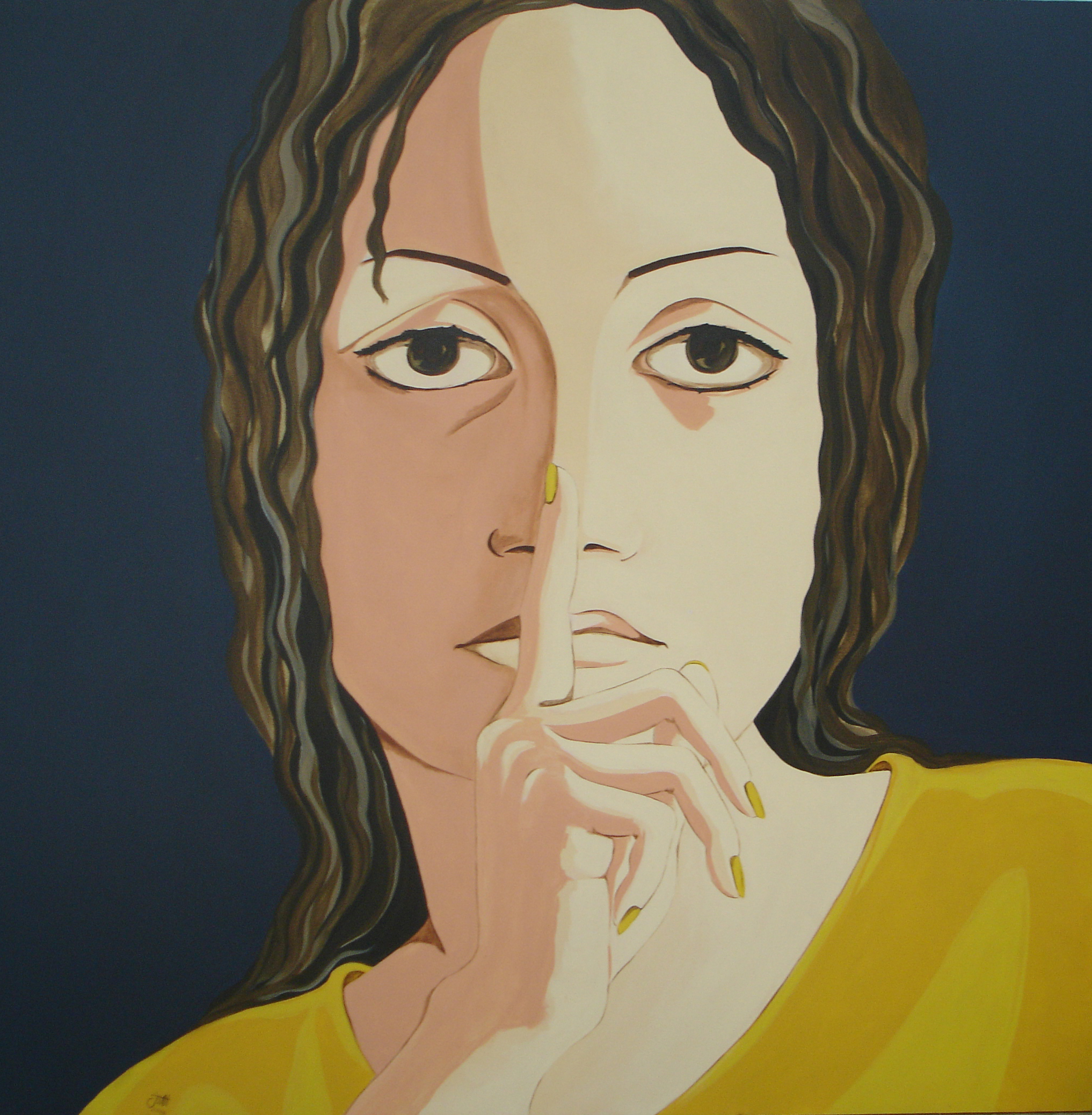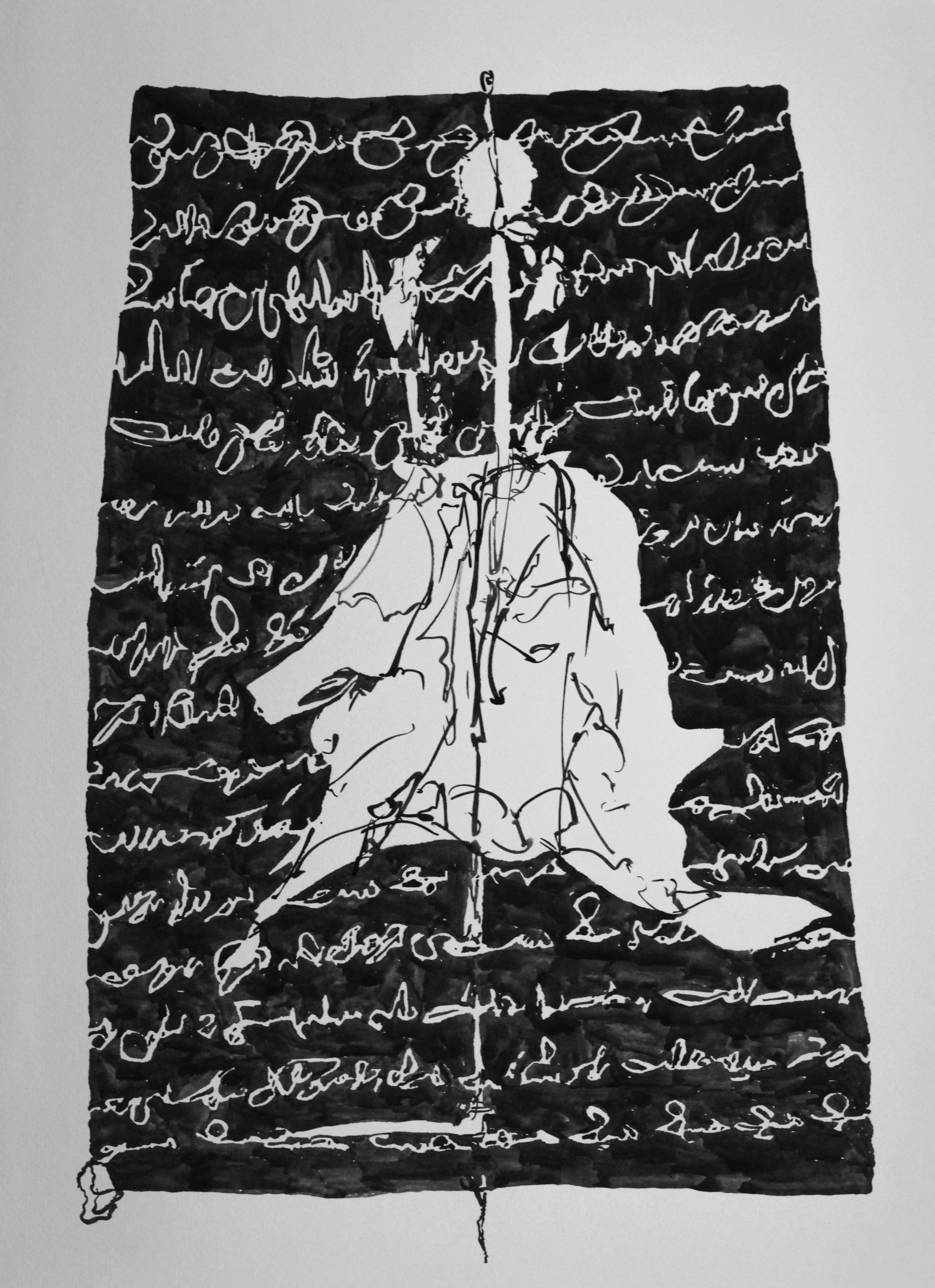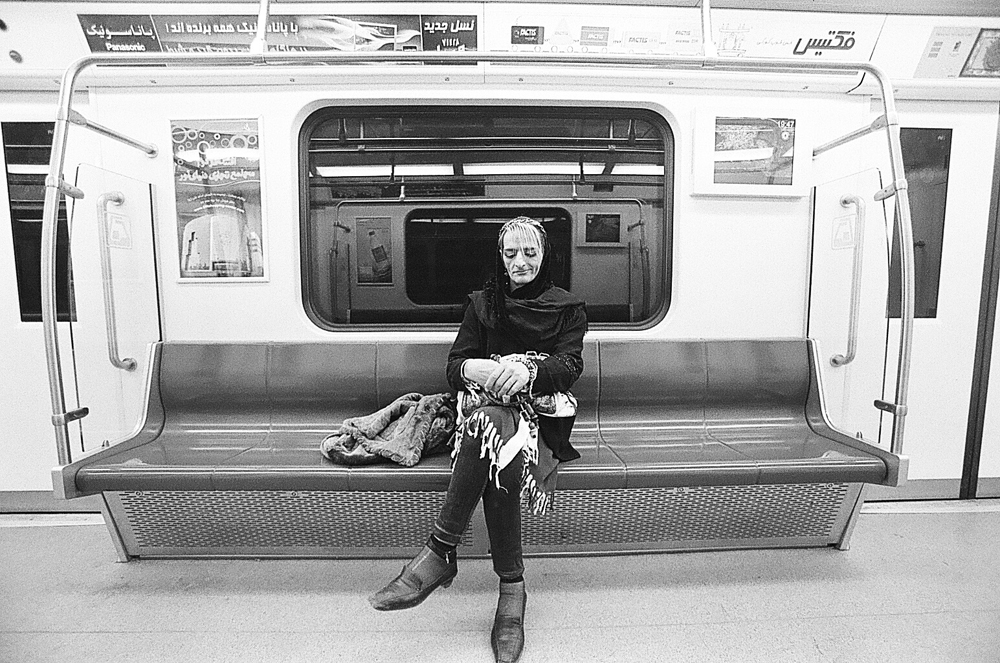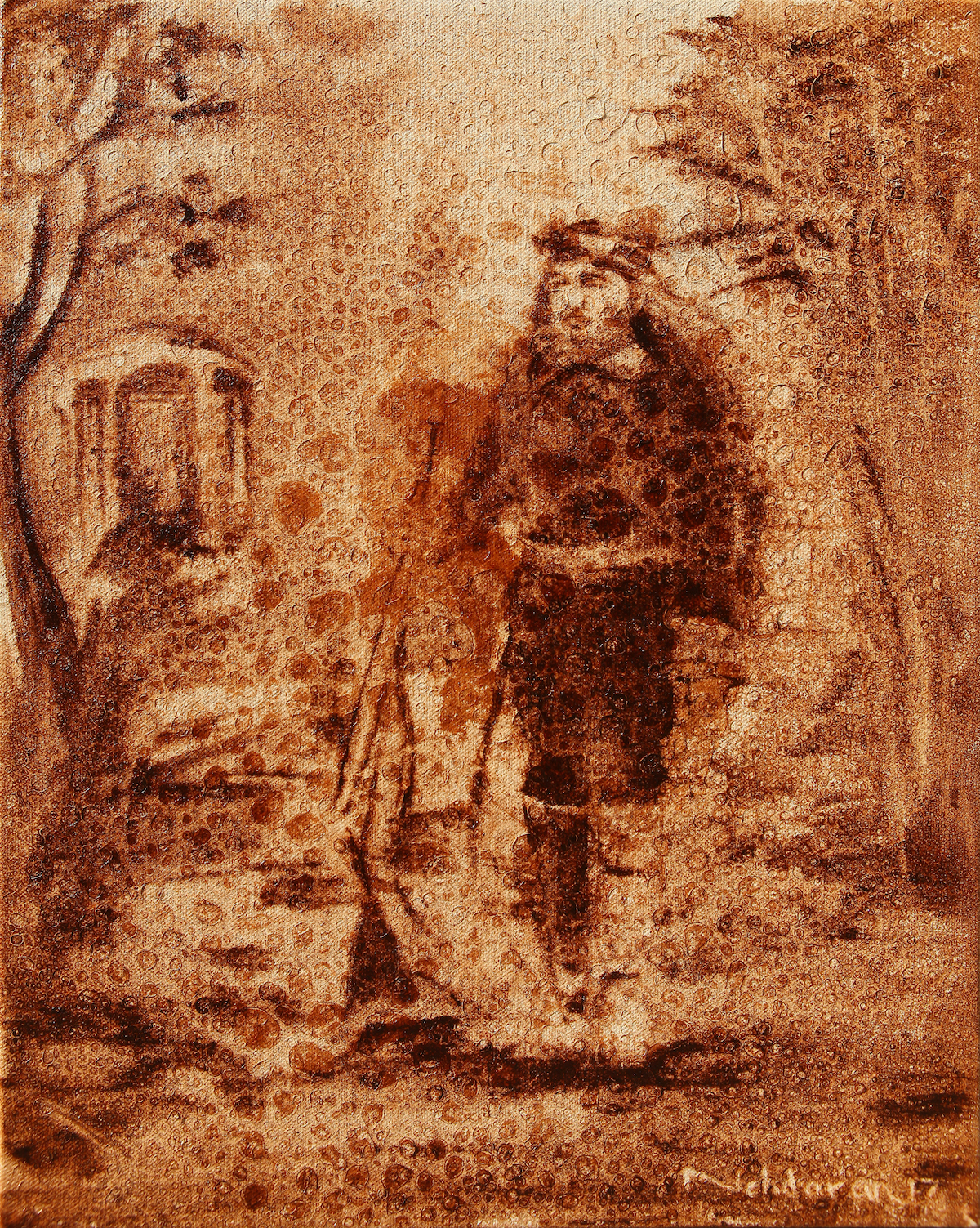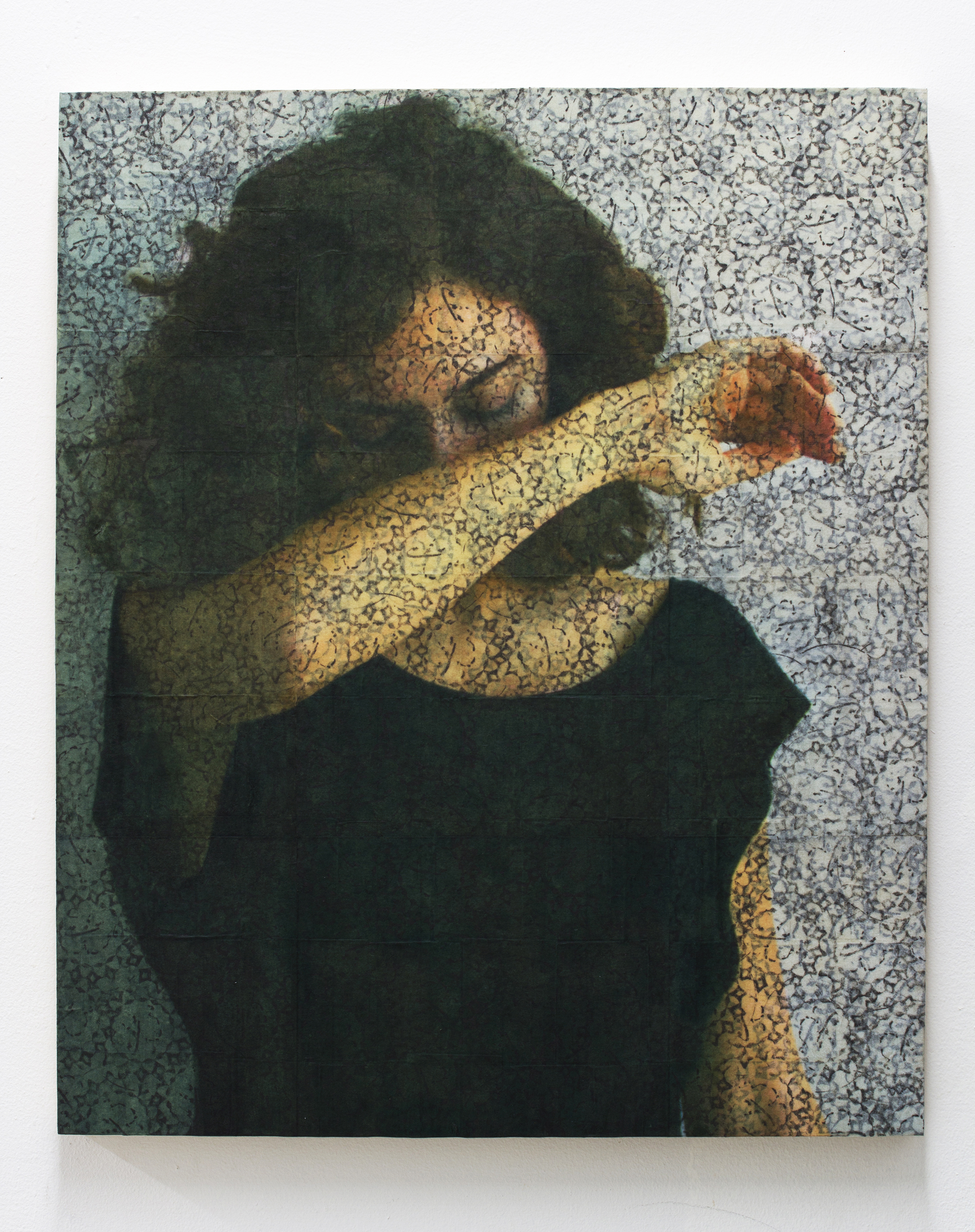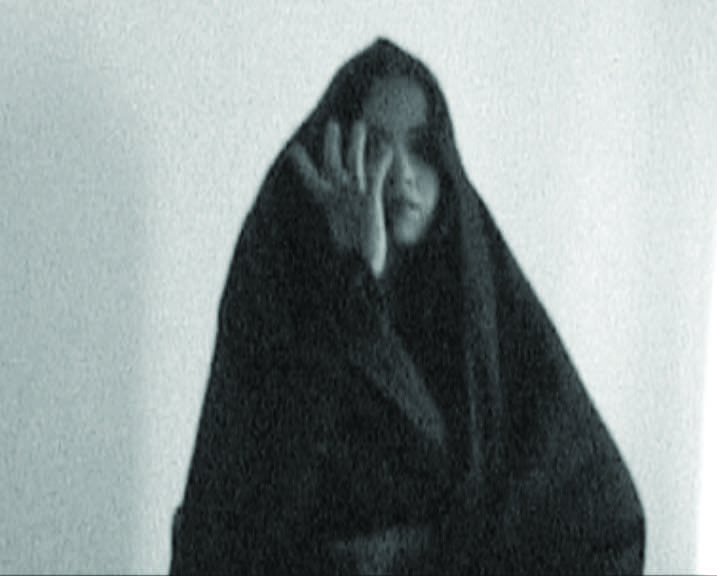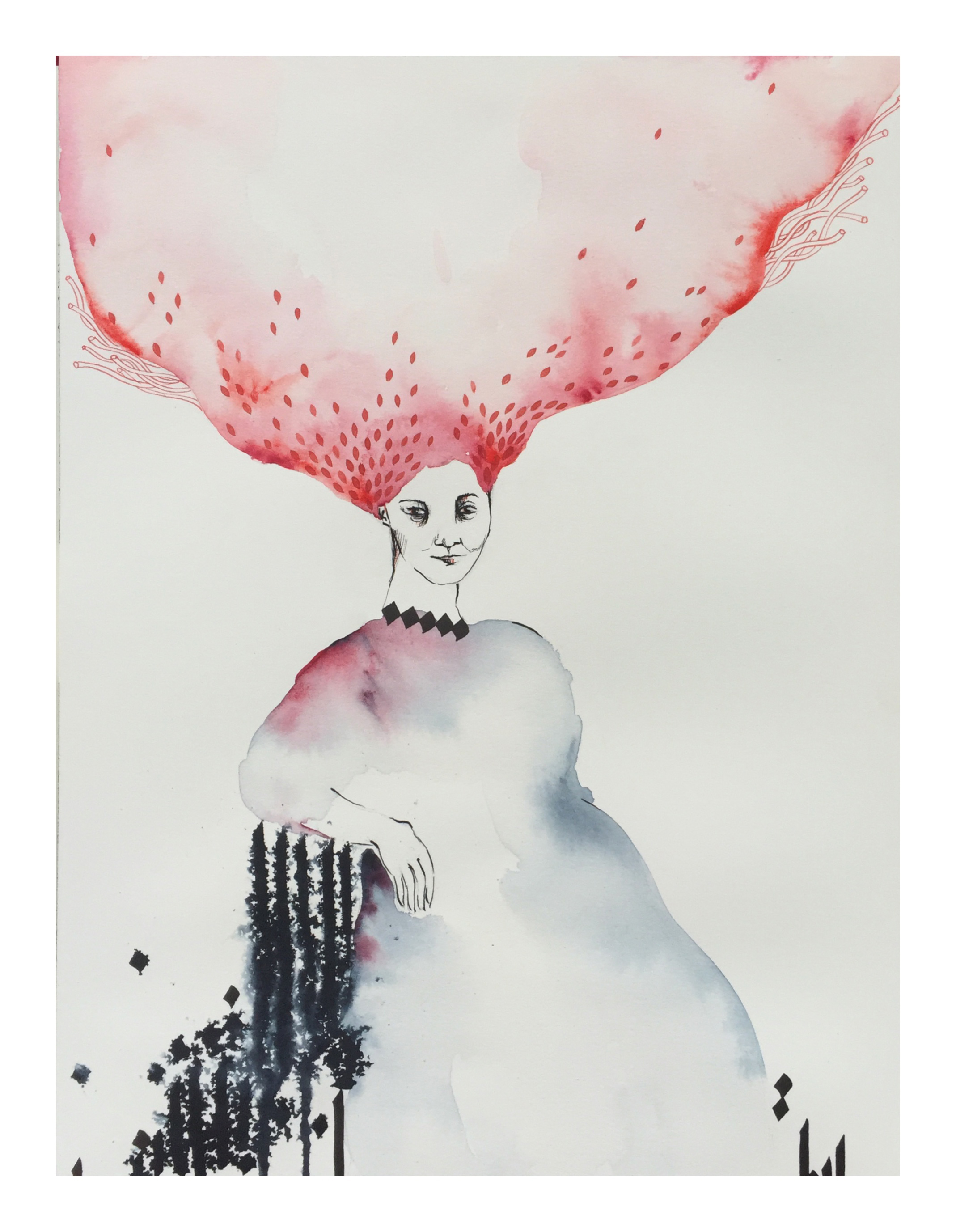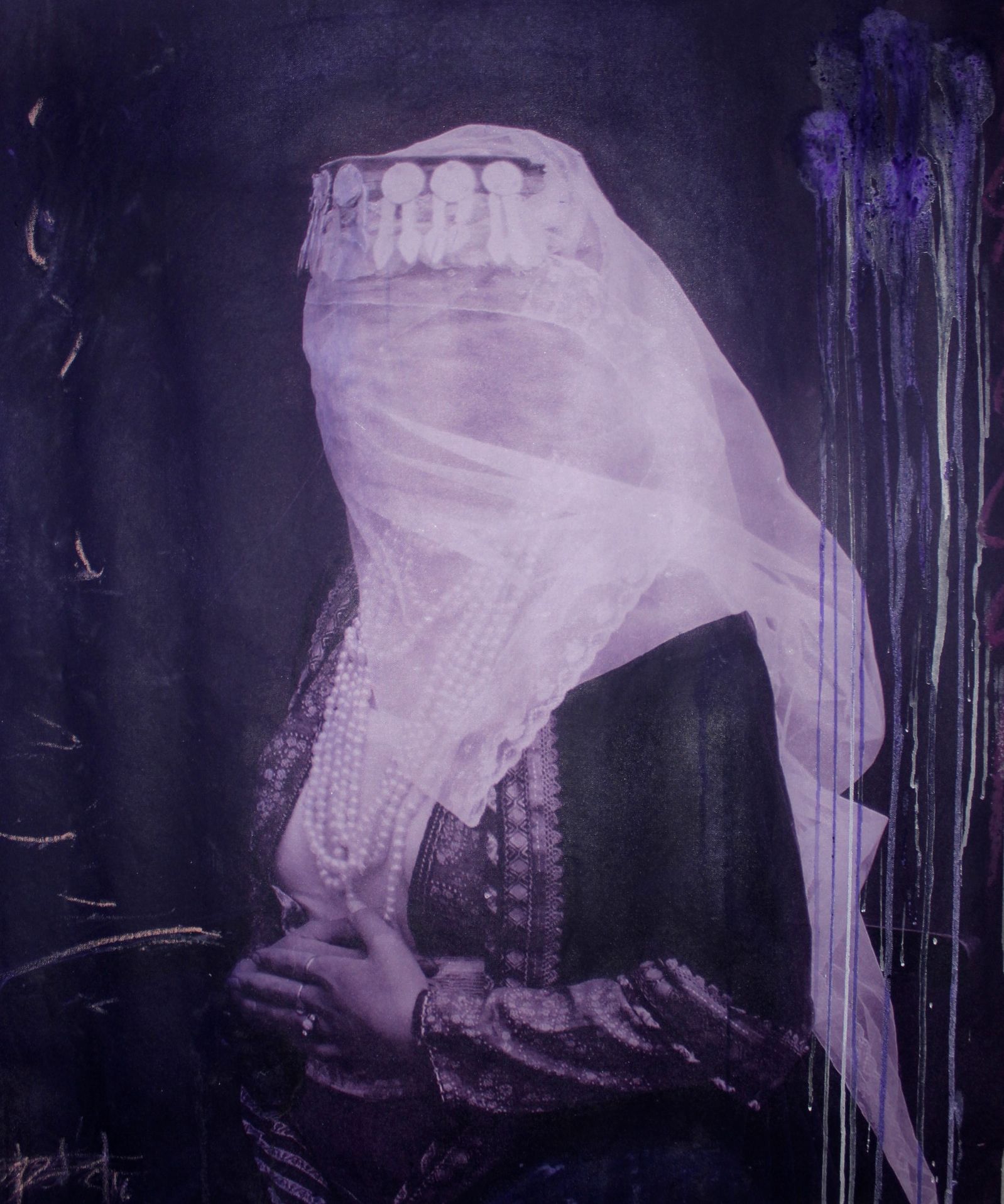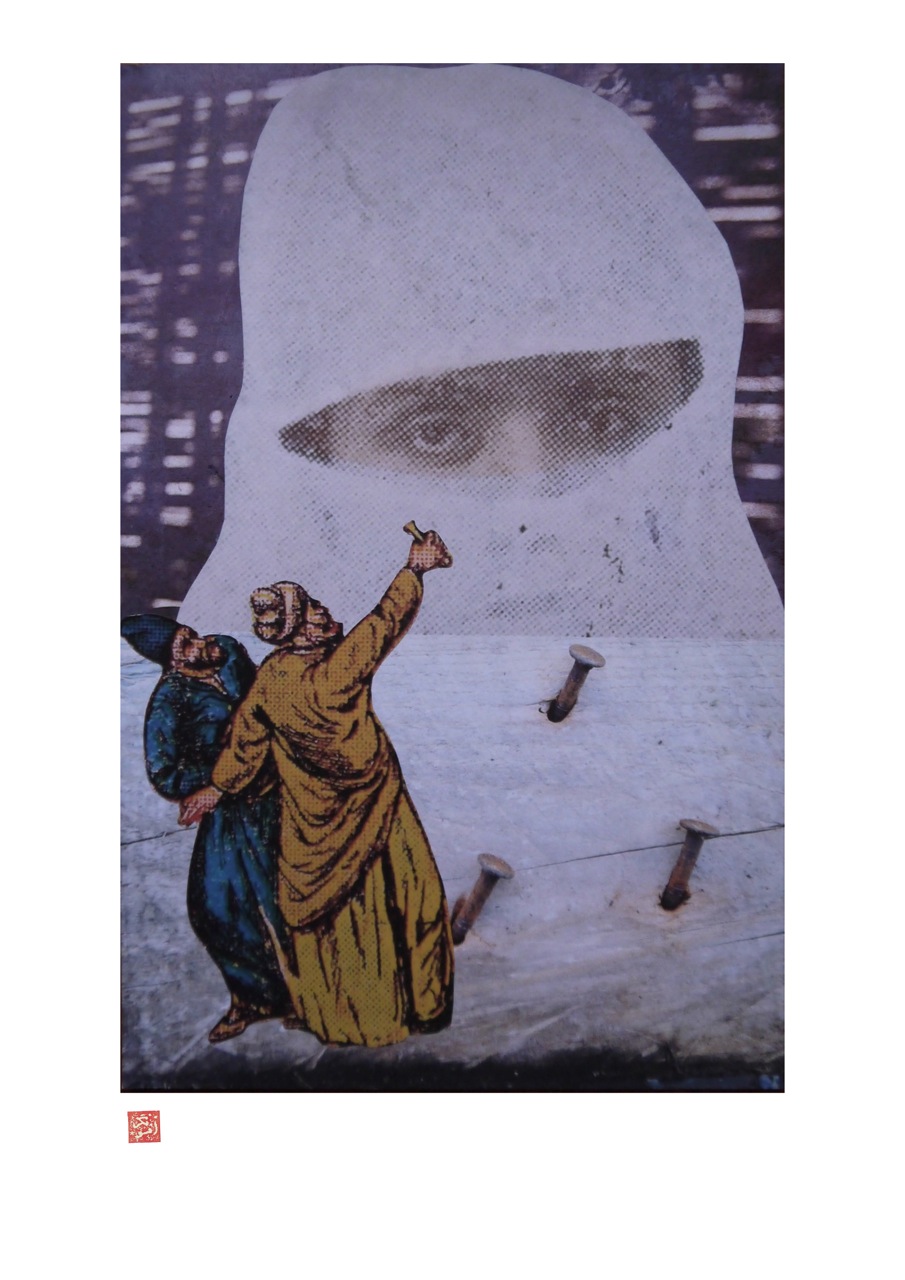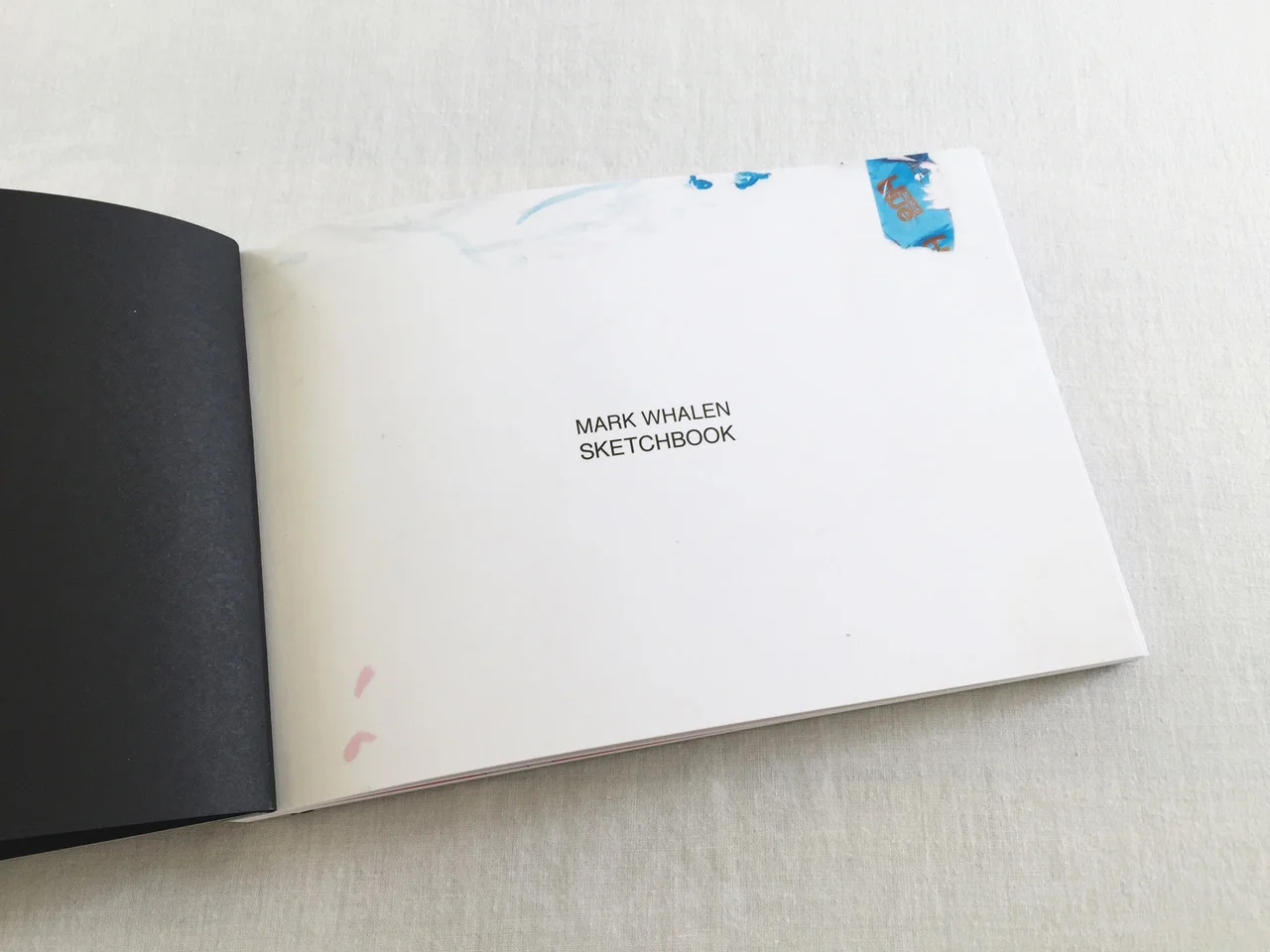Art Brief lll: The (Un)Draped Woman
By Christopher Ian Lutz @christopher_ian_lutz
Art Brief lll: The (Un)Draped Woman, presented by ADVOCARTSY in its third installation, is a multimedia art exhibition in which fourteen contemporary Iranian artists address how society perceives and constructs the image of a woman. Women’s rights not only addresses the legal rights of women, but it addresses the fundamental perceptions that society views women, which reflects on how society treats women and places expectations upon them.
Women are often objectified and treated as second-class citizens, which has led to abuse, exploitation, and restriction of self-expression. Human trafficking, physical abuse, rape, exploitation, oppression, unfair pay wages, restriction in health care, discrimination, and under representation in political affairs are major issues concerning women’s rights.
This international social issue, which one might even consider an epidemic, is a great topic of interest as women are violently threatened throughout the world. At the core of this complex social, political, religious, historical, modern issue we are dealing with identity. One of the many tragedies that comes from this mistreatment of women is that society prevents women from fully realizing their identity by trying to force one upon them— and it begins at a young age. Even before the child leaves the womb a dress is placed upon them to act as their identity. In Art Brief lll: The (Un)Draped, those layers of a programmed identity are removed.
The individual is a dichotomy composed of conservation and evolution. Throughout our lives, and even before we exit the womb, we are challenged with the social constructs that are set in place prior to our birth. Before we are born society and our parents have already designed philosophical, moral, religious, and social ideals for normality and success. Because every individual is by nature more complex than a system designed for a general population the challenge that comes into play is how the individual communicates their unique nature with the law.
In some cases the individual can utilize the institutions set in place by society to enhance or develop their special qualities, but in other cases society has not created a space for certain qualities of a person, and in some cases not only has society not created a space for a person to grow but has condemned such qualities and persecuted the individual. We have seen this especially in sexual rights.
This control or influence imposed upon the individual has a strong effect on how the individual perceives who they are, how they should act, and how others perceives them. Some people conform to the standards set in place for them while others resist and challenge the system that challenges them. Because society is not designed as such to cater to the unique qualities of every individual this conversation between society and the individual leads every person at some point in their life to ask the question, “Who am I?”
An investigation into the origin of the self is an investigation into the architecture of society as much as it is an investigation of individuality. Who am I? Am I the nationality I was born into? But I can change nationalities. Am I male or female? But gender is also mutable. Am I Christian? But a person can change religions. Am I a Republican or a Democrat? The list goes on.
When a person contemplates the categories of how they identify their self as on a daily basis they would likely conclude that those categories are social constructs, such as, nationality, gender, and religion. These categories constitute how we express our personality, beliefs, morals, and interests. But they are concepts that were created before our existence, they are constructs that change over the course of time, and they are certainly systems that can, and have throughout history in every society, be deconstructed.
To answer the question, “Who am I,” one must realize that they are something beyond these ephemeral titles. The fingerprint of an individual is distinct from any other person’s fingerprint. The pattern of a person’s fingerprint does not change, which is why law enforcement depends greatly on fingerprints for identifying individuals in crime scenes. Identity is fixed. Identity is who we are. Identity is our essence. When one removes all the false layers the individual is no longer a dichotomy, but is in complete harmony with seemingly contrasting elements. Or as Walt Whitman said,
“Do I contradict myself? Very well, then I contradict myself, I am large, I contain multitudes.”
It is that which does not change despite how we filter our self-expression. When we know one-hundred percent who we are then we have the potential to utilize one-hundred percent of our energy. We are at our best and most capable. We are able to offer society our greatest gift, that special quality that no one else but our self can offer.
Ironically, as history and our current times reveal, society fears this self-realization. When a person transcends the base foundation of the pyramid and ascends to that singular apex the behavior and mentality might not be in accordance with lower ideals. A great example of this is the Catholic Church. Throughout Christianity there have been reformers, such as Maria de Avila, or other spiritually advanced individuals, such as Joan of Arc, who were challenged and even persecuted by their own brethren because their communication with the Divine was misunderstood. Joan of Arc was burned at the stake and then later made a saint by the very institution that persecuted her.
A less violent example of an individual being sanctified after persecution can be found in almost every case of innovation in art. Modernists were judged by their contemporaries for rejecting traditional academic theory and practice. Vincent van Gogh was an outsider artist who sold one painting in his career. Edouard Manet was rejected by the Paris Salon. There was a time when street artists and graffiti artists were not acknowledged by galleries and museums, but now street art is celebrated at international art shows.
What this reveals is not just the flaws of man-made systems, but it proves the power of the individual. The individual truly has the power to move mountains and there is no system, religion, government, or tradition that has not succumbed to the individual over time. Social systems are reflections of a collective consciousness, which is why revolutions or reformations are inevitable for any given system, because the individual and collected individuals revolutionize and reform their minds and self-expression as they grow and investigate their identity.
Every individual inherently is designed to defend their life. That quality of self-defense is also reflected in any social institution. This is why conservation or conservatism creates a spectrum of identity. Without order, without law, without truth there would be chaos. Conservatism also has its spectrum of radicalism and moderation. The positive side to conservatism is that it protects the tried and true systems that an individual can use to advance their will, rather than having to exert great amounts of energy to reinvent the wheel. The negative side to conservatism is the possibility of restricting the individual from fully accessing and expressing their will.
We can observe the negative effects of conservatism in regards to modern women’s rights. Society drapes women with a sense of identity and enforces that dress through political policy, traditional values, and physical violence. Fear is a strong cage to imprison women. Women’s rights are a complex issue that has to be addressed from many angles in order to progress into a brighter future, but there is a truth that has been passed down from the self-realized sages in religion and academia that needs to be applied for this change to happen. A person who experiences freedom wants others to be free. The nature of freedom is to free those who are imprisoned. Men controlling society is not a sign that men are free. A child bully who abuses other children has a false sense of empowerment that masks their own pain, weakness, and ability to manage their own emotions. Men dominating politics and the economy and repressing women is not a sign of empowerment but a sign of self-enslavement.
Yes, political policies need to be rewritten to protect the rights of women. Yes, women need to have equal participation in the governance of society. Yes, women need more support in matters of health care. Yes, women need to be recognized as human beings and not as objects. But progress will be slow if both men and women, especially men, do not know their own identity. If men are not free in this way they will just be instruments of oppression. A person gives what they have, and if they are slaves then they will enslave others.
The (Un)Draped Woman deconstructs the common perceptions of Woman. As mentioned, women are draped with a sense of identity prior to birth. This exhibition removes that dress to reveal a person behind the gender. When that dress is removed how do we see women? What is our reaction when we see a woman act or present herself out of social norms?
Communicating these ideas through the medium of art is especially affective because the visual portrayal of tradition through contemporary styles of art complements the idea of identity, as in the process of self-realization, being an exploration of conservatism and evolution. It appears that more individuals are ‘waking up’ to knowing thyself as evident through contemporary artists challenging traditional culture. By doing so these artists both celebrate the richness of their heritage while progressing outdated concepts. By challenging or deconstructing one’s culture it does not destroy or keep the culture in the past, but rather it is a process that brings one’s culture into the present times. It is a means of communicating the essence, the identity, of one’s culture into the present conversation. And therefore such art should not be feared or vilified, but rather celebrated.
Art Brief III: The (Un)Draped Woman
Thursday, February 9 – Saturday, February 18, 2017
Closing Receptionand Art Talk
Saturday, February 18, 2017
3 p.m. – 5 p.m.
Arena 1 Gallery
3026 Airport Ave, Santa Monica, CA 90405
Panelists for this lecture include Dr. Homa Mahmoudi, PhD, Clinical Psychologist and Sandra Williams, Assistant Curator of Art of the Middle East Department at LACMA. The discussion will be moderated by Roshi Rahnama, founder and principal of ADVOCARTSY.
Featured artists:
Afsoon, Gohar Dashti, Amir H. Fallah, Firouz Farman-Farmaian, Shadi Ghadirian, Simin Keramati, Farzad Kohan, Tahmineh Monzavi, Dana Nehdaran, Hadi Salehi, Sepideh Salehi, Shilla Shakoori, Kamran Taherimoghaddam, and Shadi Yousefian.


